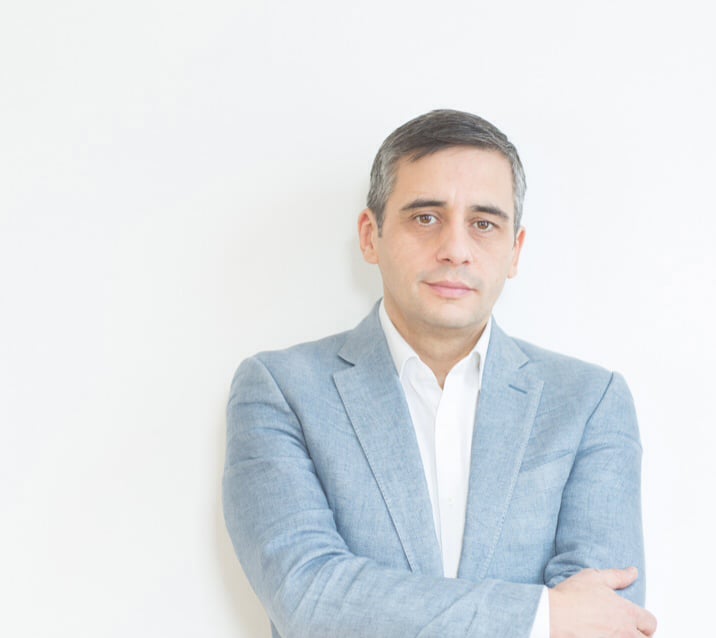
For cultural carnivores who can’t wait until the 2019 opening of New York’s newest arts venue the Shed, there’s good news: In May, “A Prelude to the Shed” will offer a taste of the multidisciplinary venue’s programs a full 12 months before it opens on Manhattan’s far West Side. The preview will include an ambitious mix of panels, concerts, and dance performances.
To call the planned events varied would be an understatement. From a concert by provocative Twitter sensation/musician Azealia Banks to a hybrid of Tino Sehgal’s performance art with William Forsythe’s 1987 ballet In the Middle, Somewhat Elevated, the Shed’s founding artistic director, Alex Poots, promises to create an institution that will serve all manner of culture-hungry audiences.
“Prelude” rendering, courtesy of NLÉ Works.
In fact, he sees no friction among the varied audiences the Shed hopes to serve.
“Tino Sehgal loves Azealia Banks!” he told artnet News on Tuesday. “When I pitched to him that I wanted to bring her into the family of artists for ‘Prelude,’ he was thrilled. He loves her music.”
Poots’s aim for “Prelude” is to step back and give audiences direct access to artists by way of a preview of the future institution.
“It’s always better for artists’ work to do the talking, rather than have it be mediated through me,” he said. “We’re trying to create a center for artists from all walks of life. There hasn’t been a place in New York that commissions across the range of work we plan to and creates parity between disciplines,” he went on. “Theater focuses on theater and museums on art, and the question becomes: Who has the legitimacy to develop and present different kinds of work and create parity across disciplines?”
Azealia Banks. Courtesy the Shed.
“Prelude” will take place in a temporary structure designed by Sehgal and architect Kunlé Adeyemi, founder of NLÉ Works. The firm is perhaps best known for “Makoko Floating School,” a prototype for a waterborne educational site located in a lagoon in Lagos, Nigeria. (The architect reproduced it for the 2016 Venice Architecture Biennale.) The Shed’s permanent Hudson Yards home, spanning some 200,000 square feet, has been designed by Diller Scofidio + Renfro and Rockwell Group.
Among the events planned for “Prelude,” there will be panel discussions featuring the likes of overachieving curator Hans Ulrich Obrist; an experimental school by artist Asad Raza; dance battles led by choreographer Reggie “Regg Roc” Gray and his D.R.E.A.M Ring dancers (Dance Rules Everything Around Me); and, besides Azealia Banks, concerts by Atlanta R&B singer-songwriter ABRA and Venezuelan electronic music producer, DJ, and songwriter Arca.
Choreographer William Forsythe. Photo by Dominik Mentzos.
In a moment when institutions throughout the world are under increasing pressure to get traction in the attention economy through Instagram-ready spectacle, Poots says he has faith in artists’ ability to lead the way toward a way to please audiences without compromising.
“If you can work with a wide range of artists, from Azealia Banks to William Forsythe to Tino Sehgal to Kunlé Adeyemi, and calibrate that well, the rest falls into place,” he says. “There’s a lot of talk about ‘reaching out,’ but if you create something compelling, the audience will reach in.” Poots has tested out these theories in previous positions—as artistic director of the Park Avenue Armory (from 2012–2015) and as founding artistic director of the Manchester International Festival.
Beyond contending with competitors like the Museum of Ice Cream, the Shed looms on the horizon at a moment when institutions are testing out the boundaries of how politically engaged they can be. Guggenheim Museum curator Nancy Spector recently rebuffed a White House art loan request in a particularly piquant anti-Trump gesture. And Queens Museum’s outspoken and progressive director Laura Raicovich left her job last week over political differences with members of the institution’s board.
In this context, Poots actually sees a deeper meaning in combining artists with divergent proclivities. “If you want to get political,” he said, “in a world where opinions can feel more siloed than ever, here is an example of coexistence and interdependence among artists who want to advance their art form at the highest level you can achieve.”
Poots believes this kind of artistic coexistence is particularly important at a time when long-established democratic norms can no longer be taken for granted.
“There’s a fear that hard-won democratic battles…are put into question now,” he said. “We can’t pretend that’s not happening. I think art can help. John Ruskin said that art shows us what it means to be civilized.”